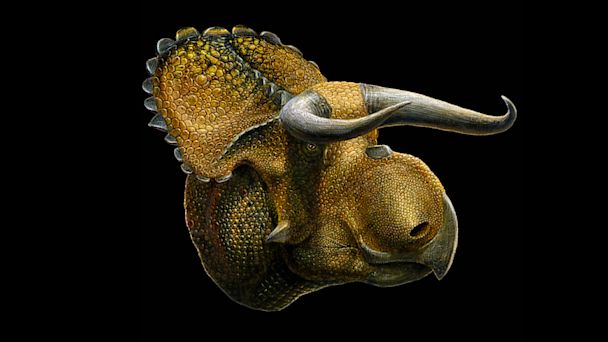Big-Nosed Dinosaur Species Found in Utah

Take the horns of a bull, mix it with the nose of a proboscis monkey, add in a dash of Triceratops, and you'll get something that paleontologists unearthed at the Grand Staircase-Escalante National Monument.
The first details of the new dinosaur, named Nasutoceratops titusi, were published in the journal Proceedings of the Royal Society B. Scott Sampson, the lead author of the article and VP of research and collections at the Denver Museum of Nature and Science, said that it got its name because of its distinctive skull. "It literally means 'big nose horn face,' which sounds a little bit like an insult," he told ABC News.
Nasutoceratops differs from other horned dinosaurs, like Triceratops, mostly in the shape of its skull. It lacks the crooked horns and spikes (what Sampson refers to as "the bells and whistles") that normally decorate other horned dinosaur skulls.
Sampson and his team have found three skulls in the excavation site, as well a couple of forelimbs. They have yet to find the back end of the dinosaurs, but Sampson said that the skulls are enough evidence to say it's an entirely new group of dinosaurs. "It's the head that really makes the difference," he said.
The fossils were found in the late Campanian Kaiparowits Formation in Grand-Staircase-Escalante. Sixteen other types of dinosaurs have also been found in this region, which was part of the landmass known as Laramidia during the Late Cretaceous Period. Many of these dinosaurs are unique to Laramidia.
"Laramidia is about one fifth the size of Africa," said Thompson. As to how the continent was able to support this wide variety of gigantic animals in a relatively confined space, he said that there was either more food around or that they ate less. "The answer may well be both. It was warmer back then, so more plant life supported more herbivores and in turn carnivores."